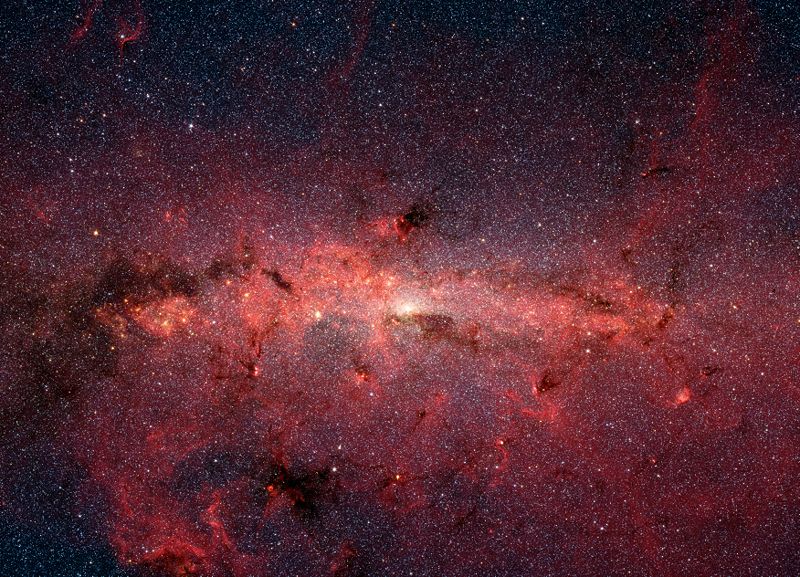Magnetic Meteorites
Interview with
Scientists have also been using X-rays to look back to the beginning of the Solar System. When the building blocks of our planets first formed four and a half billion years ago, their molten centres made them magnetic. As they solidified, these magnetic signatures were left behind, written indelibly into the rock for Richard Harrison and his colleagues to find. Georgia Mills went to meet him...
half billion years ago, their molten centres made them magnetic. As they solidified, these magnetic signatures were left behind, written indelibly into the rock for Richard Harrison and his colleagues to find. Georgia Mills went to meet him...
Richard - We started to look at extremely old rocks, in fact, the oldest materials in the Solar System which are meteorites. So, we're very lucky meteorites occasionally fall to Earth and these are fragments of asteroids which are parts of the Solar System rubble left over from the formation of the planets. By studying these meteorites, we get to study ancient magnetic fields that were on the extra-terrestrial bodies that these meteorites were originally derived from.
Georgia - Looking at meteorites in this way has never been done before. It involved using an x-ray microscope called the synchrotron to examine the tiny pieces of metal inside the meteorite which have recorded the long history of its magnetic field. But why look at meteorites in the first place?
Richard - We're interested in understanding what these bodies were like. So, if you take yourself back to the very early part of the Solar System, at the birth of our sun and it was in this sort of early period where the first protoplanets were forming. So, we want to know what those bodies were like, how big they were, how hot they were, what structure did they have. And magnetism gives us a way of looking and peering into the interiors of these bodies by studying whether or not they had a magnetic field. Did they generate a field just like the Earth does? If they do, the answer to that is yes. Then we know immediately that these asteroids had a liquid metallic core very early on. That's one of the unique things we've been able to do with the new methods we've developed for studying this meteorite that allows us to track how the intensity of the magnetic field changed over time. what we've been able to capture is the decay in that intensity over the period of time that coincides precisely with the time that we predict the core would've been freezing. So, it's a kind of a remarkable find really that this particular meteorite we studied, we've actually seen the moment at which the core finished freezing and the field then completely switched off. As soon as you have no liquid left then the magnetic field dies. And that's recorded in the metal of these very unique meteorites.
Georgia - And the Earth's core is itself in the slow process of cooling. Does this tell us anything about what we've got in store for us?
Richard - That's right. Yes, so the Earth also has an inner core. It's slowly cooling and that inner core is slowly growing. It's about 1/8 of the total volume of the core now. And that freezing process is thought to drive our own Earth's magnetic field. So, as that continues to freeze and eventually, the entire core freezes, of course, we expect if the analogy with our asteroid is a good one then we expect the intensity of the Earth's field to gradually decay away. But the time scales are rather slow. So, the Earth's core will not completely freeze for perhaps another 3.5 billion years which is not something we have to worry about but what we would predict on the basis of these results is that the Earth's magnetic field intensity would gradually decay away. The impact of that would be that the solar wind would encroach much closer towards the Earth and start to mess up with our communication satellites and all that sort of thing. So, we can look forward to much poorer mobile reception a few billion years in the future if the sun hasn't already exploded by that point.
- Previous Human impacts on ecosystems
- Next Reading ancient Roman scrolls









Comments
Add a comment